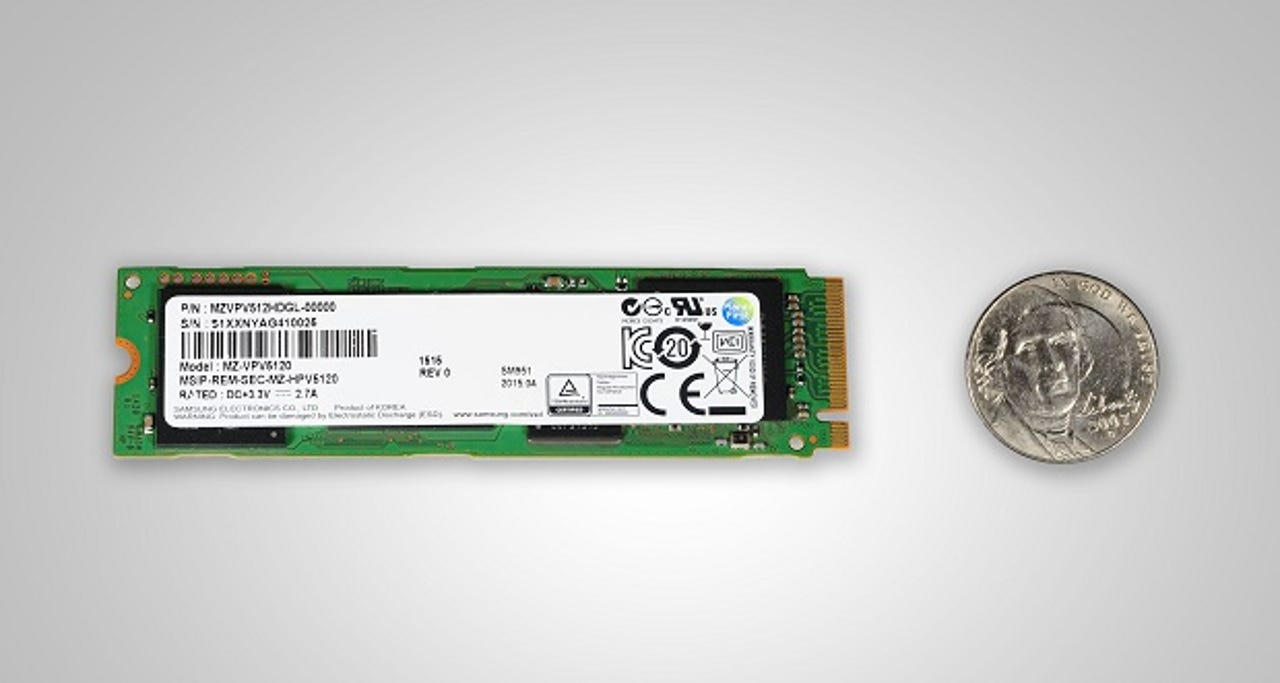Samsung adding NVMe PCIe technology to M.2 SSDs


2015 is shaping up to be the year of NVMe, an emerging standard that is giving the SSD market a performance-enhancing shot in the arm. Last week, Intel made news by releasing the SSD 750 drive family, which takes advantage of the PCI Express interface and NVMe's latency-reducing capabilities to provide data transfer speeds that trounce those of SATA drives.
Small business servers: Why and how you can say 'no' to the cloud
Now Samsung is taking the same technology and putting it in a much smaller package. The electronics giant has just announced that production has begun on the SM951-NVMe, the industry's first NVMe SSD in the tiny M.2 form factor. This will be an updated version of the SM951 M.2 drive that Samsung introduced at CES in January.
The performance jump Samsung claims for the SM951-NVMe over SATA-based M.2 SSDs is remarkable. While SATA drives offer sequential read speeds of 540MB/s and sequential writes of 500MB/s, the new SM951 is expected to deliver read speeds of 2,260MB/s and write speeds of 1,600MB/s. Like the earlier SM951 iteration, the NVMe version supports the L1.2 low-power standby mode, which allows the drive to consume virtually no power while the host computer is in sleep mode.
Though the M.2 drives can be used in desktops and workstations, they will be particularly appealing in notebooks, where their small size -- less than 4 millimeters in thickness and under 7 grams in weight -- will help PC makers keep laptops ever-thinner and lighter. The SM951-NVMe will be available in 128GB, 256GB, and 512GB capacities.
Samsung says the new drives are already shipping to PC manufacturers, though it did not disclose any specific systems or when consumers will be able to purchase computers using the SSDs. It did promise that future iterations of its NVMe solid-state storage will use its 3D V-NAND technology, which means SSDs that can deliver greater capacity and improved performance in the same form factors.